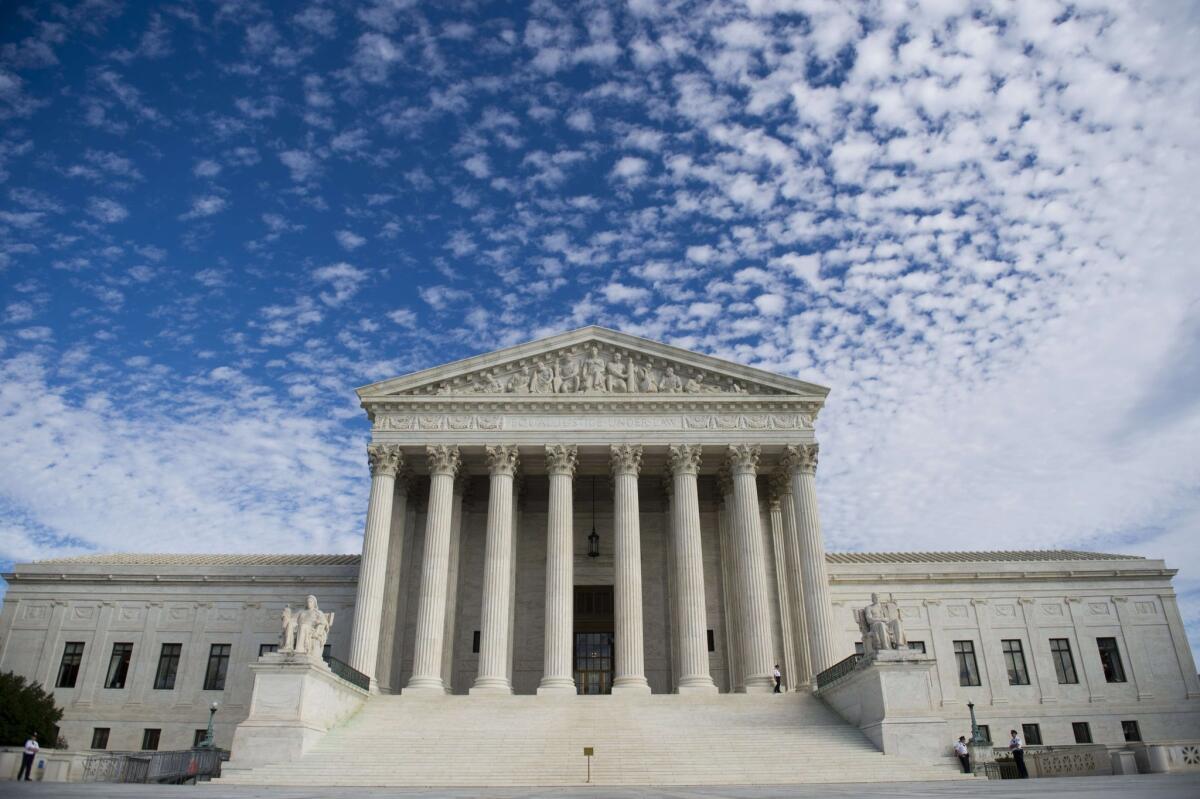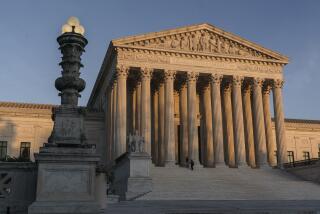Supreme Court to post briefs online but not until 2016 at earliest

Reporting from Washington â The U.S. Supreme Court will move into the 21st century world of electronic communications and post all its briefs and appeal petitions online, but not before 2016 at the earliest, Chief Justice John G. Roberts Jr. said in his year-end report on the judiciary.
The court will âoften choose to be late to the harvest of American ingenuity,â he said in explaining why change comes slowly.
Roberts works in a marble building where TV and radio broadcasts are forbidden and where the nine justices exchange ideas by writing messages on paper and having them delivered down the hall.
Since becoming chief justice in 2005, Roberts has moved very gradually to open the court and release more of its work on the Internet. Decisions have been posted on its website since 2000.
Roberts arranged to have daily transcripts of the courtâs oral arguments posted on the website as well. At the weekâs end, audio recordings to the arguments are posted.
Lawyers and others may check the status of pending cases through its âdocket search.â The site lists the names and contact information for lawyers who have submitted briefs.
But those who want to read briefs or appeal petitions need to check elsewhere. While many are posted online by the American Bar Assn. and others, the high court itself does not post on its website the thousands of briefs that are filed each year.
That will change, but not this year.
âThe Supreme Court is currently developing its own electronic filing system, which may be operational as soon as 2016. Once the system is implemented, all the filings at the court -- petitions and responses to petitions, merits briefs, and all other types of motions and applications -- will be available to the legal community and the public without cost on the courtâs website,â Roberts wrote. However, the âofficial filing of documents will continue to be on paper for all parties in all cases,â he added.
Why has this seemingly simple step taken so long? Roberts pointed to the federal budget and procurement process, which makes it hard for agencies to move quickly in buying new technology. But equally important, he said, courts need to be concerned with fairness, privacy and security.
âAs a fundamental matter of equal access to justice,â the courtâs âcase filing process [must be] readily accessible to the entire population, from the most tech-savvy to the most tech-intimidated,â he wrote. âCourts understandably proceed cautiously in introducing new information technology systems until they have fairly considered how to keep the information contained therein secure from foreign and domestic hackers, whose motives may range from fishing for secrets to discrediting the government or impairing court operations.â
The wisdom of slow but steady change has long been understood, he said, citing a sculpture in the back of the courtâs building. The lampposts rest on âsturdy bronze tortoises, symbolizing the judiciaryâs commitment to constant but deliberate progress in the cause of justice,â he said.
Twitter: @DavidGSavage
More to Read
Sign up for Essential California
The most important California stories and recommendations in your inbox every morning.
You may occasionally receive promotional content from the Los Angeles Times.











